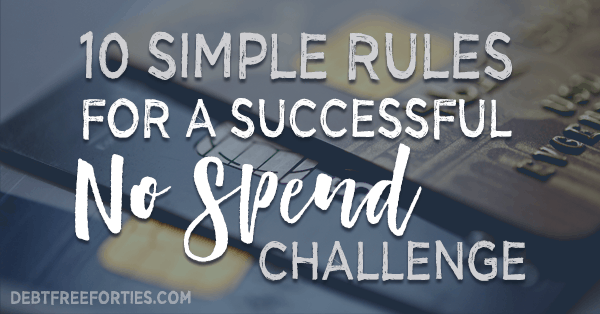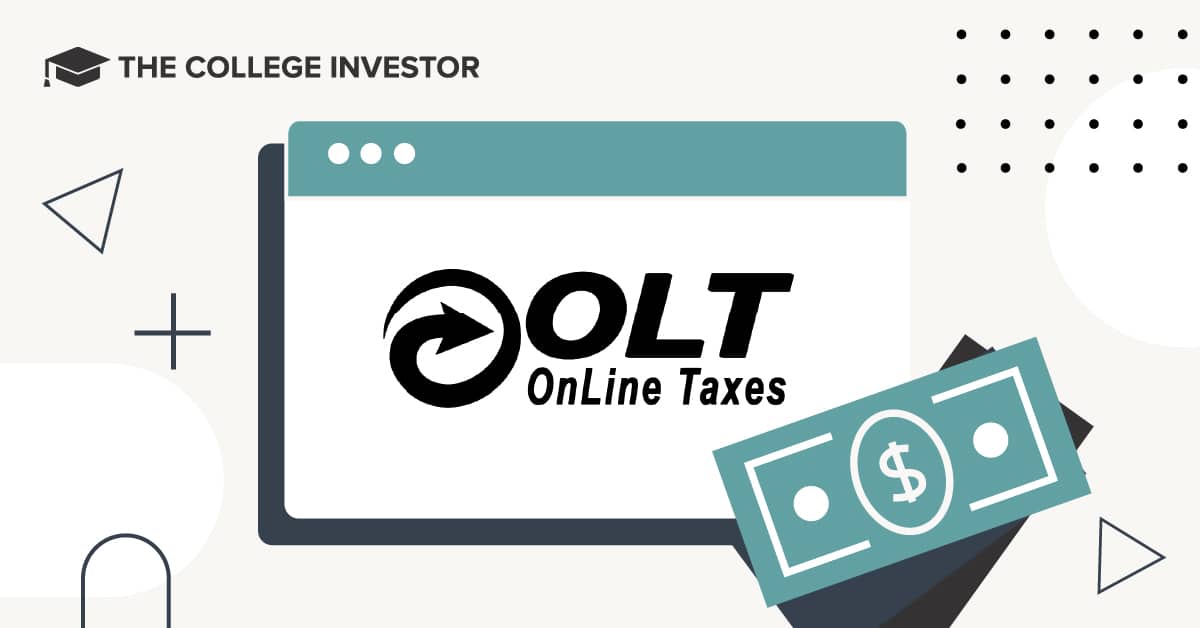10 Simple Rules for a No Spend Challenge


Thanks to Tik Tok, plenty of folks have been turned on to trying a no spend challenge. I love it when social media helps people cut unnecessary spending and find new ways to save.
If you’re not familiar with a no spend challenge, the key takeaway is to spend less money by cutting out unnecessary purchases. Yes, you’re already doing that with a budget, but during a no spend challenge you’re amping it up and cutting even more for a short period of time.
A no spend challenge (or spending freeze) is choosing a set amount of time, say a weekend, week or even a month, to not spend any unnecessary money. Some people choose to have allowances, like groceries and gas.
The purpose of the no spend challenge is to help you reset after a holiday, vacation, or to get back on track from an emergency or stop impulse spending. It can also be one of the best ways to kickstart your savings or debt repayment on things like student loans with the chunk of money you save from the challenge.
Before we get into the nitty gritty of the no spend challenge rules, download this free no spend challenge printable, calendar, and step-by-step directions to help you personalize the rules and goals for your challenge. Just enter your info to get the no spend challenge PDF:
Now that you’ve grabbed your free worksheets, read through the rules below, grab a pen, and get to planning your own personal no spend challenge!
Most of the time, no spend challenges are used as a way to stop non-essential spending for the average person. However, there can be other great reasons why you might want to start one:
The reason why you should do a no spend challenge are personal, but there’s plenty of good reasons to try one. It can also be fun to do with the family or a friend if you’re worried you won’t make it through the time period.
Choose your preferred set period of time for the challenge:
No spend challenges work by setting rules for spending and then locking away those credit and debit cards. The rules can vary depending upon your needs, but primarily there’s no shopping for wants, just needs.
Some people chose to do a bit of stocking up on groceries, pet supplies and personal needs prior to their challenge.
Allowed spending on the challenge includes items such as:
Suggested items to cut during a no spend challenge:
There are some key steps you need to do in order to ensure that your spending challenge is a success. They’re all about setting rules and making sure everyone is on the same page so there’s no miscommunication and “accidental” (ahem, side eyeing you, donuts and coffee!) spending during the challenge.
Here are the steps to starting your official No Spend Challenge 2023:
A big key to figure out your no spend motivation or savings goal. Is it to accelerate your debt payoff? Save for retirement? Do you want to boost your debt repayment? Are you saving for a vacation?
Figure out your long term goal. If you have that in mind, it makes it easier to focus on not spending when a large mocha is staring you in the face.
Once you’ve figured out your “why”, make sure to keep it at the top of your mind so you have something to focus on, especially if things get tough. Print out a picture of your dream vacation spot, or a debt tracker printable and tape it on the fridge where you’ll see it often.
The point is to challenge yourself and see how far you can stretch! A month can be really difficult, but the longer the challenge, the greater the reward. If you’re worried about how difficult it might be, start off easier with a smaller time frame, like a no spend weekend or week.
Write them down and post them as a reminder. Are there exceptions, such as purchasing fresh groceries like dairy & produce? Are you setting up cash envelopes for groceries and gas? Make a list of what’s an acceptable purchase and what’s not and hang them on the fridge.
Make sure everyone’s on the same page, otherwise it’s useless. It’s important that your spouse and family understand and agree to the goals, so that they’ll be much more likely to play along. Make sure there are no special occasions that might disrupt the no spend challenge, or factor those in as an exception if needed.
It’s the perfect time to use up all those items that get pushed to the back of the pantry every week. Often, a no spend challenge can be used to rotate out your pantry’s stock and use up items before they expire, rather than hitting the grocery store multiple times a week. It’s the perfect time to get creative with your meals and start some new habits. Get started with some of these easy dirt cheap meals.
Since having kids, I’ve found out just how expensive it can be to do anything – from eating out to an event, it can put a big dent in your cash flow. Use Google to find sites with free events in your city, have a family game night, or hit the park.
Just do it, as the saying goes. Don’t keep them on you. It’s just too easy to whip out a credit card and use it. Consider creating cash envelopes to help monitor and control spending as needed for things like groceries and gas.
If you’re used to cruising sites for the latest deals, this is the perfect time to distract yourself with household activities. Clean out garage and basement, declutter and organize. Donate, throw away, and sell stuff. It’s the perfect time to pick up a side hustle selling your gently used stuff and get it out of your house at the same time!
If you still need some no spend challenge ideas to distract you from spending, try:
Write it down on the no spend challenge tracker and keep it. Promise yourself that if you can wait until the end of the spending period, you can purchase it. Chances are, after you’ve made it through your no spend challenge, you won’t want it anymore. It’s a great way to break yourself of those impulse purchases!
Another great idea is to take the extra money you would have spent on that item and move it into savings. By the end of the challenge, you’ll see how much you would have spent on impulse purchases, which can be a real eye opener!
If the item you need is an absolute necessity, try pulling together any gift cards you have laying around, or cashing in credit card points to get what you need. (No, a stop by the coffee shop does not count as an absolute necessity…I guess.)
Put it into a separate savings account so that at the end of the month, you can apply it towards your goal. Don’t let it float away into the ether of bank account limbo.
No matter how you chose to do your no spend challenge, what’s important is that you are making an effort to change your spending habits. It can be really hard at first, but it’s a great way to reset your mindset and focus more on long term goals versus instant gratification.
Spending no money for a month is a lofty goal but definitely doable. Doing a no spend month on a regular basis is a great way to relearn how not to spend money needlessly.
To spend no money for a month, you will need to have a budget in place where you’ve planned ahead for that month’s costs.
One of the biggest keys to success is thinking ahead. If you know you’ll be participating in kid’s events or extra curricular activities, plan ahead and pack snacks or food.
If you know you’ll be meeting up with friends, suggest get togethers that aren’t at a restaurant or cost money. If you’re looking for ideas, check out 50 best things to do on a no-spend weekend. If you do have to meet up at a restaurant, check out this list of cheap places to eat to avoid overspending.
If you have a freebie, no spend weekends are the perfect time to cash them in. Keep an eye on your emails from retailers to see what kind of freebies you can cash in on. But make sure you don’t break your no buy challenge by getting sucked into spending money while you’re there!
Just this past week, I was able to grab an entire 12oz bag of coffee from World Market, just for being a rewards member. There’s nothing like the taste of free coffee in the morning!
Lastly, if you’re looking for even more inspiration, check out The No Spend Year: How You Can Spend Less and Live More by Michelle McGagh. In it, she details how she set financial goals for herself to just pay bills with a minimal budget for groceries during a no spend challenge year. The rest she saved while she learned how to socialize and travel for free for an entire year! If you’ve looking for inspiration to try a no spend year, this is it.
Another great book to check out is The Year of Less: How I Stopped Shopping, Gave Away My Belongings, and Discovered Life is Worth More Than Anything You Can Buy in a Store by a fellow personal finance blogger, Cait Flanders. Cait’s journey doesn’t focus on minimalism or decluttering, but instead focuses on a no buy year and consuming less in all aspects of life.
Have you ever done a no spend challenge? How’d it go? What tips would you recommend for next time? Leave your thoughts in the comments below!
Interested in other money savings challenges?
Ready to start budgeting or want to hear more about ours? Click here to learn how we’ve paid off $26,619 of Debt in 17 Months! Or, if you’re on a tight budget, here are 11 easy ways to save money on a tight budget. If you’re still struggling with spending too much money, check out my post on not spending money you don’t have.

Pricing is one of the lowest with all tax situations included Easy to use, but no tax form or data...

If merely the thought of opening your banking app makes you nervous, you’re not alone. Especially if you’re currently living...

If you’ve spent any time looking at real estate deals, you’ve seen a slide screaming: “Projected IRR: 16%.” It sounds...